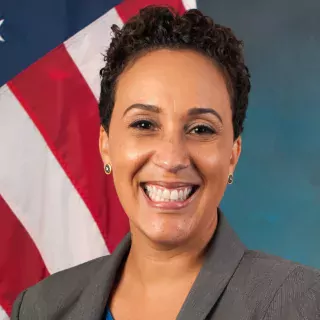The Crisis of Drug Misuse and Federal Efforts to Address It
Earlier this week, many media outlets ran stories highlighting the growing crisis of drug misuse in the United States. Citing Centers for Disease Control and Prevention (CDC) data, the New York Times said that more than 100,000 Americans died from drug overdoses during a yearlong period ending in April 2021.
Drug misuse—the use of illicit drugs and the misuse of prescription drugs, such as opioids—has been a persistent and long-standing public health issue in the United States. National rates of drug misuse have increased over the last two decades, and are a serious risk to public health, our society, and the economy.
GAO has issued numerous reports highlighting steps the federal government can take to improve its response to this crisis. In 2019, before the pandemic, we raised this issue as a critical one needing attention and in 2020, we decided to add drug misuse to our High Risk List—a list of areas that need immediate attention. And since then we have been looking at how the pandemic has impacted these issues.
Today’s WatchBlog post looks at our work on the drug misuse crisis, and federal efforts to address it.
The federal strategy
In recent years, the federal government has spent billions of dollars and has enlisted more than a dozen agencies to help address drug misuse and its effects.
The National Drug Control Strategy is the federal effort to reduce substance use disorders through a coordinated national drug control policy. The Office of National Drug Control Policy (ONDCP) is responsible for overseeing and coordinating this effort.
Our work has identified deficiencies in the most recent iterations of the Strategy, which could serve as an action plan for addressing this high-risk area. In December 2019, we recommended that ONDCP develop and implement key planning elements, like resource investments and roles and responsibilities, to help it structure its ongoing efforts and to better position the agency to meet statutory requirements for future iterations of the Strategy.
In November 2020, we recommended that agencies clarify how their programs help to achieve specific goals of the Strategy.
The availability of treatment and recovery programs
As drug misuse has increased, so has demand for treatment and care. But in December 2020, we reported that treatment availability has not kept pace with need. The Substance Abuse and Mental Health Services Administration (SAMHSA) told us that while drug misuse is widespread, nearly one-third of U.S. counties (31%) did not have facilities offering any level of substance use disorder treatment.
Some key barriers in addressing demand for treatment include workforce shortages, insurance reimbursement and payment models, federal and state requirements, and the stigma of drug abuse.
SAMHSA administers grant programs aimed at expanding access to treatment for substance misuse. But we found that the data SAMHSA relies on to understand the impact of its awards and efforts was unreliable because it included both individuals who received treatments funded by its grant programs and those who didn’t. We recommended that it improve the quality of data it uses.
After treatment, there are some federal programs for those recovering from drug misuse. For example, the Department of Labor (Labor) provides grants to states to address the employment and training needs of those affected by and recovering from substance use disorders.
In May 2020, we recommended that Labor share information, such as lessons learned, from states participating in the program with all states, tribal governments, and outlying areas. Labor agreed with our recommendation.
Monitoring the impact of federal efforts
Our past work has identified gaps in the availability and reliability of data for measuring the federal government’s progress with addressing drug misuse.
For example, ONDCP and other federal, state, and local government officials have identified challenges with the timeliness, accuracy, and accessibility of data on overdose cases (both fatal and non-fatal) from law enforcement and public health sources. In March 2018, we recommended that ONDCP lead a review on ways to improve overdose data.
ONDCP is also responsible for evaluating the effectiveness of national drug control policy efforts across the government. But, in March 2020, we reported that ONDCP had not fully developed performance evaluation plans to measure progress against each of the Strategy’s long-range goals, as required by law.
Without effective long-term plans that clearly articulate goals and objectives as well as specific measures to track performance, federal agencies cannot fully assess whether taxpayer dollars are invested in ways that will achieve desired outcomes, such as reducing access to illicit drugs and expanding treatment for substance use disorders.
COVID-19’s effects on drug misuse and new federal assistance
It’s not yet known just how much the pandemic has impacted mental health and substance use. But, in September 2020, SAMHSA reported opioid overdose deaths have increased in some areas of the country by as much as 25% to 50% during the pandemic compared to the previous year.
In March 2021, we reported on the effects that the COVID-19 pandemic was having on demand for behavioral health services, including mental health and substance use disorders. The added stressors caused by the pandemic—such as feelings of isolation and financial stress—have contributed to increases in emergency room visits for overdoses and suicide attempts and requests for other behavioral health services. Our podcast with GAO health care expert John Dicken discusses this report.
Under the CARES Act and other subsequent pandemic relief acts, SAMHSA was appropriated around $8 billion for behavioral health services, which include substance abuse prevention and treatment services and community mental health services, among other activities. For example, specific funds are available for the Certified Community Behavioral Health Clinic Expansion Grant program while other funds can be spent to address emergency substance abuse or mental health needs in local communities.
Our work monitoring the federal response to the drug misuse crisis is ongoing, but to learn more about our findings and recommendations so far, visit our High Risk page on this issue.
- Comments on GAO’s WatchBlog? Contact blog@gao.gov.






